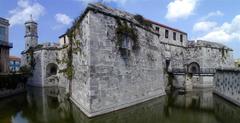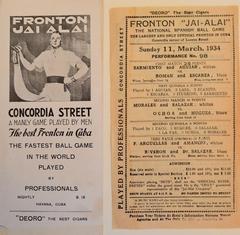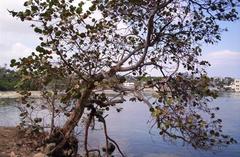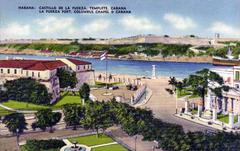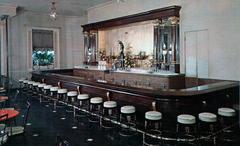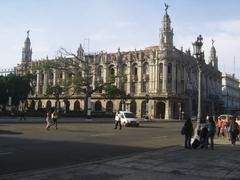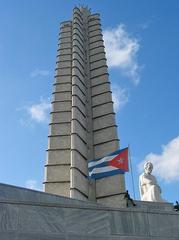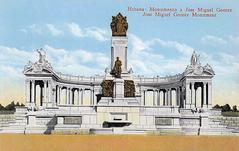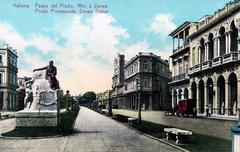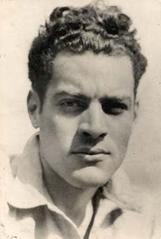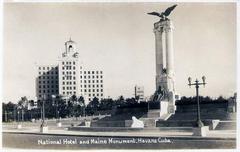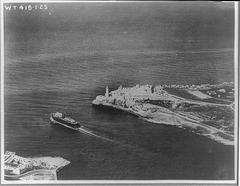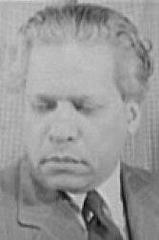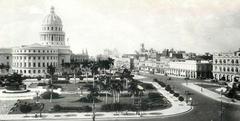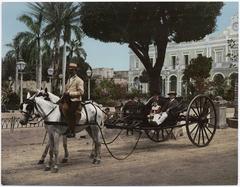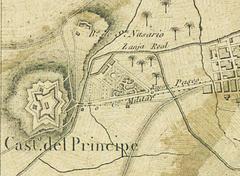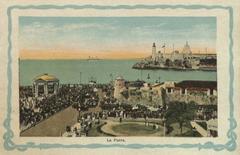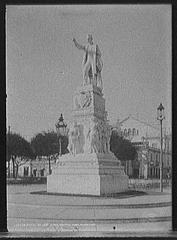Iglesia Del Espíritu Santo Visiting Hours, Tickets, and Guide to Havana’s Oldest Church
Date: 04/07/2025
Introduction
Nestled in the heart of Old Havana, the Iglesia del Espíritu Santo is not only the city’s oldest standing church but also a powerful symbol of Cuba’s colonial legacy, religious diversity, and social evolution. Founded in 1638 by a brotherhood of free people of color, the church presents a rare blend of architectural styles and has played a unique role both spiritually and socially. Its continued use as a parish and cultural monument makes it a must-visit for anyone exploring Havana’s historical sites (Cubanet; Visitar Cuba; Lonely Planet).
This comprehensive guide covers the church’s history, architectural highlights, cultural significance, practical visitor information—including visiting hours and accessibility—and recommended nearby attractions, ensuring an enriching experience for all.
Table of Contents
- Historical Overview
- Cultural and Religious Significance
- Visiting Information
- Nearby Attractions and Itinerary Tips
- Visuals and Media Suggestions
- Frequently Asked Questions (FAQ)
- Conclusion and Call to Action
- References
Historical Overview
Origins and Early Development
The Iglesia del Espíritu Santo was established in 1638 at the intersection of Calle Cuba and Acosta in Old Havana by free people of color—Afro-Cubans who had gained their freedom or were born free. Initially a modest hermitage, it was elevated to full parish status in 1648, making it the city’s second parish after Parroquial Mayor. Bishop Jerónimo Valdés played a significant role in its early development and is buried within its crypts (Sacred Destinations; Cuban Travel Agency; Wikipedia).
Architectural Evolution
17th and 18th Centuries
Initially constructed with a single nave of coral stone and an unadorned façade, the church soon saw the addition of a bell tower in 1720 by Pedro Hernández de Santiago, which remains one of Old Havana’s tallest. In 1760, Bishop Morell de Santa Cruz ordered a southern chapel, and the original nave was covered with a wooden “alfarje” ceiling, while the new nave received a four-pitched roof (Wikipedia; Fotos de la Habana).
19th Century Modifications
A clock was installed on the bell tower in 1808, enhancing its civic role. Mid-century renovations included the demolition and rebuilding of the southern chapel’s wall to restore the church’s original proportions. In 1863, the Order of the Paúles Fathers undertook major restoration, preserving colonial features while ensuring structural stability (Trip Cuba).
Stylistic Features
Iglesia del Espíritu Santo is distinguished by its synthesis of Moorish, Gothic, neoclassical, and Andalusian elements. Key features include:
- Single-nave layout with irregularly placed windows
- Imposing bell tower with a clock (added in 1808)
- Wooden “alfarje” ceilings and a rare Gothic-inspired ribbed vault in the Capilla Mayor
- Andalusian-style courtyard with lush gardens (Cuban Travel Agency; EcuRed)
Cultural and Religious Significance
Sanctuary and Asylum
In 1772, a papal bull and a royal decree from Charles III of Spain granted the church the right to offer sanctuary to those fleeing persecution—an exceptional privilege in colonial Cuba. A plaque at the bell tower commemorates this unique status, reinforcing the church’s foundational commitment to social justice and its ties to Havana’s free Black communities (Cubanet; Wikipedia).
Burial Vaults and Catacombs
Beneath the main chapel are crypts and burial vaults, including the tomb of Bishop Valdés. These were in use before the opening of Havana’s Colon Cemetery in 1876, providing a rare window into colonial funerary customs (Sacred Destinations).
Artistic Heritage
The church houses important religious artworks, including paintings by José Nicolás de la Escalera—considered Cuba’s first painter—and Arístides Fernández. Noteworthy pieces include “The Burial of Christ” and a depiction of the post-crucifixion Christ (Wikipedia; Visitar Cuba).
Visiting Information
Visiting Hours & Tickets
- Monday–Saturday: 9:00 AM to 5:00 PM
- Sunday: 10:00 AM to 3:00 PM (reserved for Mass and services)
- Admission: Free; donations appreciated (Cuban Travel Agency; Visitar Cuba)
Hours may vary during religious holidays—check with the parish or your accommodation for updates.
Guided Tours and Accessibility
- Guided tours: Available through local tour operators and sometimes led by parish volunteers or historians. Advance booking is recommended.
- Accessibility: The main entrance has steps and the interior includes uneven flooring. Wheelchair access is limited; visitors with mobility needs should arrange assistance or notify the parish in advance.
Special Events and Photography
- Events: The church hosts services for Holy Week, Pentecost, Christmas, and other Catholic feast days, as well as occasional concerts and community events.
- Photography: Permitted, but avoid photographing during services or of parishioners without consent.
Nearby Attractions and Itinerary Tips
The Iglesia del Espíritu Santo is centrally located in Old Havana and within easy walking distance of:
- Plaza Vieja: A lively square with colonial architecture, cafes, and galleries (UNESCO)
- Convento de Santa Clara: Historical convent with gardens
- La Merced Church: Renowned for its Baroque style
- Museo del Ron Havana Club: Showcasing Cuba’s rum heritage
- Calle Obispo: Pedestrian shopping and dining street
Combine your church visit with a stroll through Old Havana’s cobblestone streets and nearby museums for a full cultural immersion.
Visuals and Media Suggestions
Include high-resolution photographs of:
- The church’s exterior and bell tower
- The interior nave and altar
- The Andalusian courtyard and crypts
Alt tags should use keywords such as “Iglesia del Espíritu Santo visiting hours,” “Havana historical sites,” and “Iglesia del Espíritu Santo tickets” for accessibility and SEO.
Frequently Asked Questions (FAQ)
What are the visiting hours of Iglesia del Espíritu Santo?
- Monday to Saturday: 9:00 AM–5:00 PM; Sunday: 10:00 AM–3:00 PM (hours may vary on religious holidays).
Is there an entrance fee or ticket required?
- No, entry is free. Donations for preservation are appreciated.
Are guided tours available?
- Yes, through local operators or the parish office. Advance booking is recommended.
Is the church wheelchair accessible?
- Accessibility is limited due to steps and uneven floors; contact the parish for assistance.
Can I take photos inside?
- Yes, except during services or of worshippers. Always ask permission if unsure.
What nearby Havana historical sites can I visit?
- Plaza Vieja, La Merced Church, Convento de Santa Clara, Museo del Ron Havana Club, and Calle Obispo are all close by.
Conclusion and Call to Action
The Iglesia del Espíritu Santo is a living monument to Havana’s spiritual resilience, architectural ingenuity, and vibrant multicultural heritage. Its foundation by free Afro-Cuban communities, sanctuary status, and unique stylistic synthesis make it a highlight among Havana historical sites.
Plan your visit today:
- Check current visiting hours
- Consider a guided tour
- Explore nearby attractions for a well-rounded cultural itinerary
For up-to-date information, curated travel guides, and interactive maps, download the Audiala app or follow our social media channels. Your journey into Havana’s past begins with a single step into its oldest church—share your discoveries to inspire others.
References
- Iglesia del Espíritu Santo la más antigua en pie de Cuba, 2023, Cubanet
- Church del Espíritu Santo, Havana, 2023, Wikipedia
- Iglesia Parroquial Espíritu Santo La Habana, 2024, Visitar Cuba
- Iglesia del Espíritu Santo, Havana Historical Site, 2024, Cuban Travel Agency
- Iglesia Parroquial del Espíritu Santo, Havana, 2024, EcuRed
- Iglesia del Espíritu Santo, Havana, 2024, Lonely Planet
- Iglesia del Espíritu Santo, Sacred Destinations, 2023
- Iglesia del Espíritu Santo Havana, 2024, Cuba Travel Network
- Iglesia del Espíritu Santo Havana Insider, 2024

